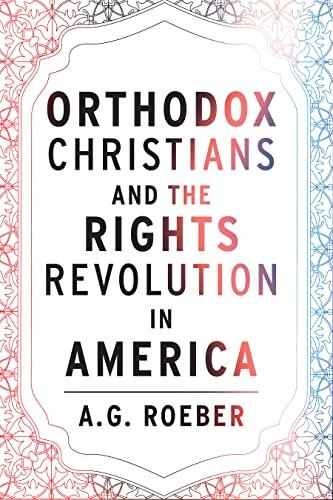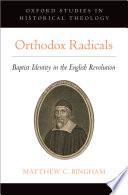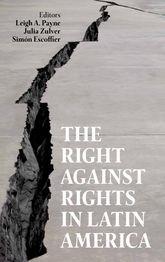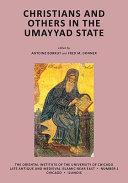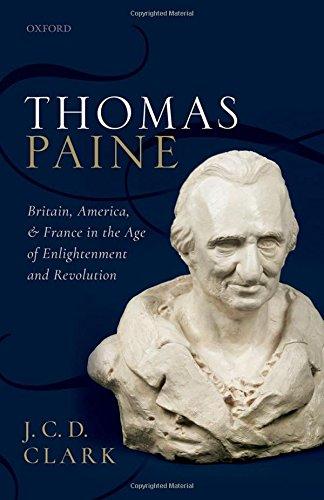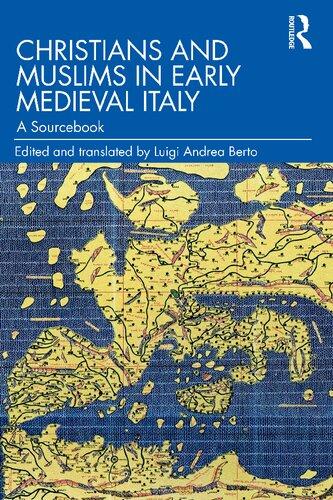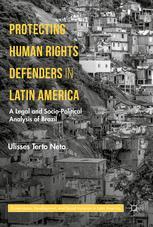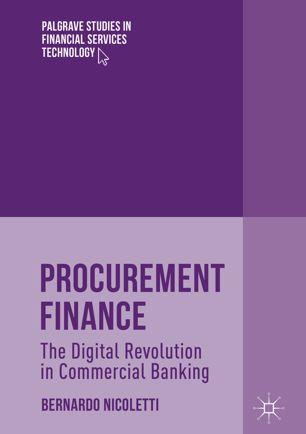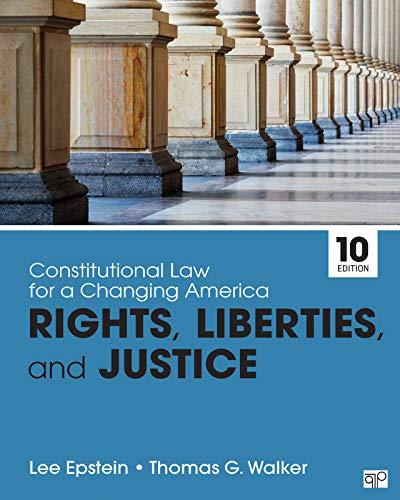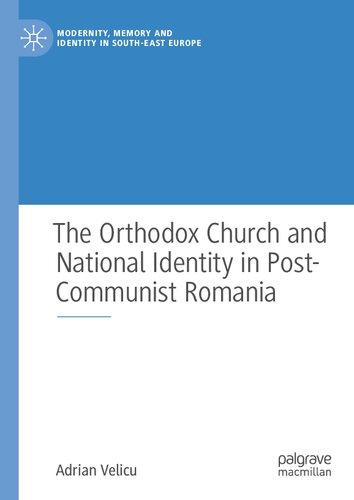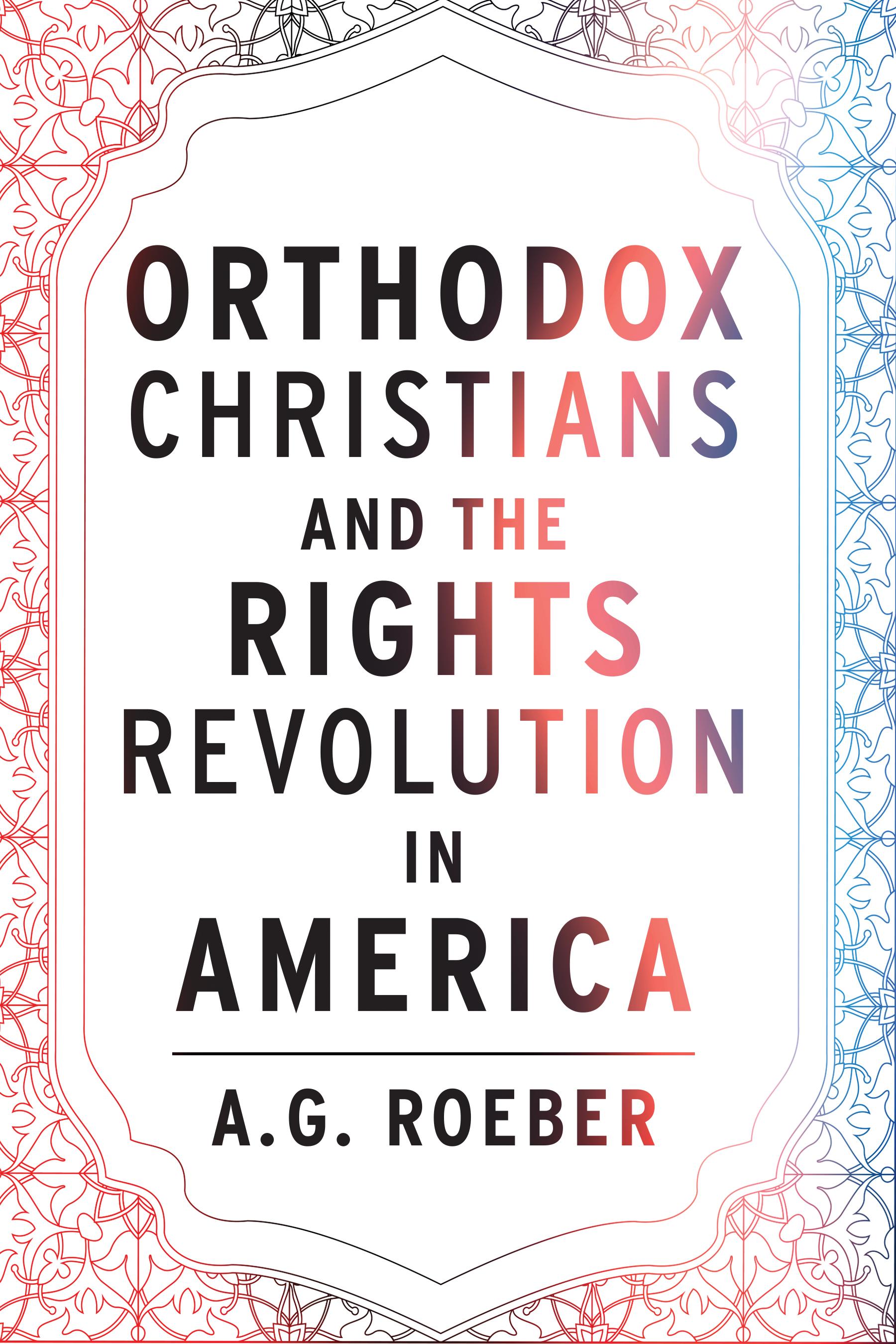Orthodox Christians and the Rights Revolution in A merica
A. G. Roeber
FORDHAM UNIVERSITY PRESS
New York • 2024
Copyright © 2024 Fordham University Press
All rights reserved. No part of this publication may be reproduced, stored in a retrieval system, or transmitted in any form or by any means—electronic, mechanical, photocopy, recording, or any other—except for brief quotations in printed reviews, without the prior permission of the publisher.
Fordham University Press has no responsibility for the persistence or accuracy of URLs for external or thirdparty Internet websites referred to in this publication and does not guarantee that any content on such websites is, or will remain, accurate or appropriate.
Fordham University Press also publishes its books in a variety of electronic formats. Some content that appears in print may not be available in electronic books.
Visit us online at www.fordhampress.com.
Library of Congress CataloginginPublication Data available online at https://catalog.loc .gov.
Printed in the United States of America
26 25 24 5 4 3 2 1
First edition
to the suffering church and all citizens of the sovereign nationstate of Ukraine
Orthodox Christians and the Rights Revolution in A merica
Prologue: A Rights Primer
Orthodox Christians have encountered a variety of terms involving rights in the North American context. But they are also heirs of terms that might be thought of as relating to “rights” developed over centuries in historically Orthodox cultures and regimes. It will prove useful for the reader to have at hand a short historical primer of such rights claims, which sometimes overlap, and have changed in meaning and significance over time. Martti Koskenniemi concludes that even “if rights cannot be grounded on faith or philosophy, we might at least think of them historically, as part of the normative organization of a period . . . there are serious interpretive questions about the meaning and relations of ‘natu ral rights,’ ‘individual rights,’ ‘subjective rights,’ and ‘ human rights’ in di fferent periods.”1
I. Remote Origins
According to some historians, ancient Stoic philosophers contributed to an understanding of rights, but what the word “rights” meant both in the late ancient world and in its later impact on rights history continues to produce di ff erent, and sometimes opposing, assessments. Stoic philosophy
1. Martti Koskenniemi, “Rights, History, Critique,” in Human Rights: Moral or Political?, Adam Etinson, ed. (Oxford: Oxford University Press, 2018), 41–60, at 42–43.
placed a heavy emphasis on the importance of justice and equity, based on an appeal to a belief that all humans were bound together by their “nature,” an insight developed at length by Cicero.2 But historians of ancient Rome, while acknowledging the importance of the Stoic tradition, nonetheless conclude that the Stoics, despite their re spect for the dignity of humans, did not develop a universal understanding of dignity or “dignitary rights” in the sense that such language is used currently.3 At least for some historians, the universal understanding of dignity and rights had to await the rise of Christian ity. Roman law under the republic had long established notions of “personality” and “status” before Christianity emerged as a new religious movement at the dawn of the Empire. When Roman jurists wrote of “personality” they addressed how the law of the republic applied to Roman citizens, not to “outsiders.” “Status” in that tradition defined free males; full citizens; and then the conditions created by family, marriage, and minority age. This “law of status” allowed Romans “to deal with the rights and duties of di fferent types of persons within the group without the need to create elaborate social mechanisms and legal enforcement to install and perpetuate order” because for the most part “status was determined at birth” and changed only as one passed from child to adult, entered marriage, (and in the case of women) entered a new “natural family.” 4 It is accurate to say that Roman law recognized the person or “natu ral personality,” but one cannot argue that a “right” existed for the “subject” in ways that would later inform the growth of “subjective human right.” Both philosophers of law and historians concur that jus in the Roman context meant “just” or a kind of power that could be attributed to a thing or person— and had little to do with what much later came to be
2. John A. McGuckin, The Ascent of Christian Law: Patristic and Byzantine Formulations of a New Civilization (Yonkers, NY: St. Vladimir’s Seminary Press, 2012), 54.
3. Kyle Harper, “Christianity and the Roots of Human Dignity in Late Antiquity,” in Christianity and Freedom: Vol. I: Historical Perspectives, ed. T. Shah and A. Hertzke (Cambridge: Cambridge University Press, 2016), 123–148, at 127–30.
4. William J. Curran, “An Historical Perspective on the Law of Personality and Status with Special Regard to the Human Fetus and the Rights of Women,” Milbank Memorial Fund Quarterly/Health and Society 61, no. 1 (1983): 58–75, at 58–59.
understood as “subjective right” if we understand that word to imply the capacity or “faculty” of claiming. Thus, it is both correct to say that ancient Romans spoke of “subjective right” meaning jus right and just— but also to assert that they had little sense of “rightsclaiming.”
Charles Donahue took issue with the argument of some scholars that subjective right is a concept that emerged only in a Western Christian medieval context. Instead, he pointed out, “the notion of subjective right . . . was, in fact, quite fundamental to Roman law. Because the idea of subjective right was quite fundamental to Roman law, there was nothing particularly original about the canonists’ and civilians’ use of the idea in the twelfth and thirteenth centuries. What was original was the development of the idea of subjective natu ral right.”5 Unfortunately, the later development of distinctions between “subjective versus objective” rights, especially in the work of G.W.F. Hegel, threatens to bleed back into the ancient to earlymodern discussions that had little to do with his assertions. For those earlier generations, a distinction between right as “what is right” and right as a “sphere of authority” perhaps best expresses their worldview. Moreover, they would have insisted that authority to make choices and decisions did not release one from moral obligations.6
But a long argument has emerged since the 1970s about where to locate a “divide” between ancient Roman understanding of subjective right, the medieval Western Christian development of natural rights, and then, modern claims for individual rights. Moreover, in attempting to trace the origins of rights concepts, alternative readings of the evidence continue to
5. Charles Donahue, Jr., “Ius in the subjective sense in Roman law. Reflections on Villey and Tierney,” in A Ennio Cortese, ed. Domenico Maffei et al., 3 vols. (Rome: Il Cigno Galileo Galilei, 2001), 1:506–535, at 506; Fabian Wittreck, Christentum und Menschenrechte (Tübingen: Mohr Siebeck, 2013), 6–9. See also Tony Honore, Ulpian: Pioneer of Human Rights, 2nd ed. (Oxford: Oxford University Press, 2002). For impor tant explorations of the pre Christian and Christian explorations of the “self as individual” see Alexis Torrance and Johannes Zachhuber, eds ., Individuality in Late Antiquity (Farnham, UK: Ashgate, 2014).
6. I am indebted to Philip Hamburger for pointing out this danger. On Hegel’s views, see Steven B. Smith, “What is “Right” in Hegel’s Philosophy of Right,” American Political Science Review 83:1 (March, 1989), 3–18; David James, “Subjective Freedom and Necessity in Hegel’s Philosophy of Right,” Theoria: A Journal of Social and Political Theory 59:131 (June, 2012), 41–63.
produce di fferent conclusions that bear on how, and to what degree, Orthodox Christians can reconcile such modern claims to their own theological convictions. Rather than attempting an analysis of each participant’s point of view, or rehearsing the vast literature on these topics, we need to focus on those elements that bear directly on how the experience of rights claims created the par tic u lar version in the North American context with which the Orthodox had to contend.7 Scholars who have pondered the origins of the concept of the “self” have continued to offer di fferent assessments of the importance of interior experience that emerged from the Franciscan thought of the fourteenth century, and they have built upon the profound influence of Augustine of Hippo’s explorations. Even if expressed at times in Aristotelian categories, this focus on interior experience led most people in the West to a rejection of nominalism and to locate both sensation and reflection in the mystery of cognition.8 In that development remote figures once regarded as avatars of a secular vision of rights, such as the Italian Renaissance figure Pico della Mirandola, have now received a closer reading, revealing how deeply even such controversial figures maintained their loyalty to a Christian perspective on God and his relationship to human affairs.9
Brian Tierney, Francis Oakley, and other scholars have probed the legacy of ancient Roman law and the Western theological debates that broke
7. The summaries below draw upon the following: Siegfried Van Duffel, “From Objective Right to Subjective Rights: The Franciscans and the Interest and Will Conceptions of Rights,” in The Nature of Rights: Moral and Political Rights in Late Medieval and Early Modern Philosophy, ed. Virpi Mä kinen (Helsinki: The Philosophical Society of Finland, 2010), 63–92; Thomas Mautner, “How Rights Became ‘Subjective,’ ” Ratio Juris 26, no. 1 (March 2013): 111–132.
8. Christian Rode, Zugänge zum Selbst: Innere Erfahrung in spätmittelalter und früher Neuzeit (Mü nster: Aschendorff Verlag, 2016), 399–476, at 467.
9. On Pico della Mirandola’s 1486 oration and his decidedly nonKantian Christology and focus on mystical union with God, see the entry in the Stanford Encyclopedia of Philosophy: Brian Copenhaver, “Giovanni Pico della Mirandola,” The Stanford Encyclopedia of Philosophy (Fall 2016). http://plato.stanford.edu /entries/picodellamirandola/ (accessed July 31, 2014); M.V. Doughtery, “Three Precursors to Pico della Mirandola’s Roman Disputation and the Question of Human Nature in the Oratio,” in Pico della Mirandola: New Essays, Doughtery, ed. (Cambridge: Cambridge University Press, 2008), 114–151, especially at 132–146.
out in the twelfth century. Far from confining the concept of “right” to corporate bodies, a small but influential group of theologians argued that, based on biblical precedent, and even, in a limited fashion, on aspects of ancient, pre Christian Roman law, rights emanated from the principle of consent and from within the Church—as well as from secular concepts and forms of concern for property rights, worldly privilege, and human dignity.10 Charles Donahue insists that “the idea of subjective right was quite fundamental to Roman law,” and the thirteenth century decretalists built on this to develop “the idea of subjective natu ral right.” Granted that the Roman term ius was quite ambiguous, nonetheless it encompassed “not only a body of normative rules, a legal order, and . . . a right of an individual but also an objective situation that was right. .”11 By the mid1200s, scholars in the West had focused increasingly on William of Ockham’s claims about rights, at least insofar as those discussions shaped events on the Western European continent. But Tierney in par ticu lar has shown that the tendencies scholars, such as Michel Villey, identified in Ockham were already developing in the twelfth century. Whether Ockham’s claims contributed to the specifically English political debates about rights versus the role of law, deserves more elaborate consideration that we must undertake shortly. But what we can say immediately is that the thirteenth century decretalists developed various synonyms “when they wished to provide substitutes for the word ius used subjectively.” “When we speak of rights in the Church we do not speak of an alien or a strictly secular concept . . . rather, we are making use of a set of concepts that was given its early shape and definition by the canon lawyers of the twelfth and thirteenth centuries. A rights vocabulary is accordingly an integral part of
10. Brian Tierney, The Idea of Natural Rights: Studies on Natural Rights, Natural Law and Church Law 1150 1625 (Atlanta: Scholars Press, 1997), 13–77; James H. Hutson, “The Emergence of the Modern Concept of a Right in America: The Contribution of Michel Villey,” The American Journal of Jurisprudence 39 (1994): 185–224; for the warning that for Ockham, a “ human right . . . is a right, all things being equal, to (take steps for one’s own) survival based on mentally competent personhood, and which may only be activated in times of extreme need, or in an environment not subject to conventional human positive law;” Jonathan Robinson, William of Ockham’s Early Theory of Property Rights in Context (Leiden: Brill, 2013), 4.
11. Donahue, “Ius in the subjective sense,” 506, 507.
the Church’s tradition.”12 Endorsers of Tierney’s accomplishment point to his central claim that “rights may be seen as a web of doctrines which transcends the pre sent, has deep roots in the past, and has a universal validity and applicability . . . [and] if Tierney is right . . . subjective rights are not the creation of a selfish, individualistic, capitalistic society. Rather, they have long been a part of Western thought. The concept of rights arose in societies whose spirits were far more communitarian than ours today and whose laws were not as closely identified with the will of the nationstate.”13 The disagreements between Tierney and Villey may come down to this, that Villey claimed that the “new conception of rights was the first step on the downhill road to modernity, individualism, egoism, and neglect of social solidarity and the common good” divorced from the “overall objective and just order which was given a classical statement by Thomas Aquinas.”14 Tierney does not cast the medieval debates in this light. Some Orthodox do; others, as we will see, do not.
Arguments about how the belief in natural rights grew from medieval to early modern Christian societies also depend upon a contested reading of Paul’s letter to the Romans, especially Chapter 5 verse 12 where the apostle addresses the question of whether there is a kind of “law written on the heart”—which, if one accepts the assertion—has provided the basis for further claims that a “law of nature” exists, understood as a kind of reasoning that free persons can deploy to identify and choose that which is deemed to be good from that understood to be evil. Whatever the Apostle Paul believed to be the case, his scholarly contemporaries in Second Temple Judaism were not of one mind as to whether a basic set of “Noachic” laws
12. Charles J. Reid, Jr., “Thirteenth Century Canon Law and Rights: The Word ius and Its Range of Subjective Meanings,” Studia canonica 30 (1996): 295–342, at 299, 342.
13. Kenneth Pennington, “Review Essay: The History of Rights in Western Thought,” Emory Law Journal 47 (1998): 237–252, at 238, 240.
14. Mautner, “How Rights Became ‘Subjective’,” 125. The claim that seventeenthcentury notions of natural rights stemmed from individuals and their entry into civil social compacts is advanced by C.B. MacPherson, The Political Theory of Possessive Individualism (Oxford: Oxford University Press, 1962); Ian Shapiro, The Evolution of Rights in Liberal Theory (Cambridge: Cambridge University Press, 1986) traces the later (and in his argument, negative) consequences of how the seventeenthcentury theorists were subsequently used.
applied universally to humans outside the Covenant. For Christians who accepted Paul’s teaching, the most one can say is that as long as one confines one’s understanding of “natural law” to this limited view—that people are actually in a position to reason their way to choosing what appears to be good versus a choice that results in evil consequences— one can understand why lateancient and early medieval Christian theologians assumed that conscience existed, and operated in this fashion. Beyond this limited understanding, however, Orthodox theologians were not inclined to push the argument any further. Rather, aside from some scattered comments, Eastern Orthodox writers devoted little attention to teasing out what was meant by “nature” other than concluding that the word designated what a person or object “was.”15 The quite di fferent historical contexts and lived experiences with forces of nature, warfare, political institutions, and understandings of the Church itself guaranteed the absence of Eastern Orthodox participants in the developing Western Christian understanding of natu ral law and natu ral rights.16
Because it was the legacy of English political and legal thought and experience that shaped the later debates over rights in the North American context far more than continental philosophy or the impact of Roman law, one impor tant dimension of those debates cannot be overlooked— the role of property and the natural rights claims that were made on its behalf. Nowhere were the claims of William of Ockham repudiated as sharply as they were in England. Himself born in Surrey, England, Ockham is justly remembered for his contribution to medieval political thought by insisting
15. For the literature on Noachic law and varying interpretations, see A.G. Roeber, “ ’What the Law Requires Is Written on Their Hearts’: Noachic and Natu ral Law among GermanSpeakers in Early Modern North America,” William and Mary Quarterly, 3rd Series 58, no. 4 (October, 2001): 883–912, at 884–89. For a deeply skeptical assessment of the possibility of reconciling “natural law” theory to Orthodox understanding of the human person see David Bentley Hart, “Is, Ought, and Nature’s Laws,” First Things, March, 2013, http:// www firstthings com /article/2013/03/is oughtandnatureslaws.
16. For explorations of the claim that Orthodox concerns for personhood are not bound up with a concern for “nature” but instead should be understood in terms of existential, phenomenological and personalist insights, see Doru Costache, Darren Cranshaw, and James Harrison, eds., Wellbeing, Personal Wholeness and the Social Fabric, (Newcastle on Tyne: Cambridge Scholars Publishing, 2017).
on the separation of power and authority exercised by throne and altar. But his thought has also been identified with those looking to justify a nearabsolute right or prerogative to power on the part of sovereigns. His reflections on the nature of Franciscan poverty, shared with other members of his order, came to an end in his own country between his death in 1347 and the renewed drive toward a vigorous exercise of royal prerogative undertaken by the Tudor and Stuart dynasties beginning in 1485. Scholars who have probed his arguments agree that in regard to his use of the word jus, “depending on the context, we translate this word into either ‘right” or ‘law”, although it is not always clear which meaning was (primarily) intended.” Adding to the difficulties, the Franciscans apparently believed that “having a (legal) right involved having some kind of normative power . . . the rights under consideration were those that can give rise to legal proceedings.” It appears that for Ockham as well as many of his contemporaries, “ legal rights were often implicitly seen as arising from the exercise of natural rights.”17 Ockham had argued on the basis of a “tertiary natu ral law” that the rights of a monastic corporation to elect its prior or to decide to sell property owned in common were not inalienable, but alienable rights.18 While England’s canon lawyers may have doubted that property could be located in natu ral law, suggesting that the law of nations was an example of positive law only, England’s common law commentators interpreted the matter differently.19
By 1765, Sir William Blackstone’s Commentaries on the Laws of England summed up a century and a half of refutation of such claims. The “absolute rights” grounded in “immutable laws of nature,” Blackstone concluded, had originally been the rights of all humans, but now had become the special preserve and characteristic summation of the “rights of Englishmen.” No individual could entirely alienate his rights. A limited alienation was possible but subject to qualifications such as those made by the philosopher John Locke—i.e. short of creating a tyranny. Stopping short of that, government could regulate how limited alienations were worked out in concrete
17. Jonathan Robinson, William of Ockham’s Early Theory of Property Rights in Context, 65; Van Duffel, “From Objective Right to Subjective Rights,” 7.
18. See Tierney, Idea of Natural Rights, 170–94.
19. Edward S. Corwin, The ‘Higher Law’ Background of American Constitutional Law (Ithaca: Cornell University Press, 195), 15–23, 21n.62.
terms. None of those qualifications were thought to grant to government an unlimited power to alienate the rights to personal security, personal liberty, and private property. That conviction crossed the Atlantic with British subjects who, in the wake of a revolution, relied heavi ly on a carefully edited version of Blackstone for their proof that private property was an unalienable right, and rooted in the laws of nature.20 The seventeenth and eighteenthcentury continental philosophical elaborations of novel claims that justice could be derived without indebtedness to ancient and medieval understanding of a right order, cosmic in nature, had little impact on North American discussions of rights. Few North American thinkers probed the threats of the “ ‘pretend’ theism of Descartes, and, lurking in the background, the ‘atheism’ or pantheism of Spinoza [or] Cartesianism, at least as it was imagined by its enemies, [that] was insidious in that it appeared to concede [the existence of God] but, by denying the doctrine of final causes, in fact denied [divine providence].”21 The sources that shaped American understandings of rights would come instead from the Scottish Common Sense philosophers and North American colonists’ indebtedness to a peculiar reading of English history and its defense of the “rights of En glishmen,”22 both strains of Western philosophical, legal, and theological reflection alien to the Eastern Orthodox.
20. William Blackstone, Commentaries on the Laws of England: A Facsimile of the First Edition of 1765–1769, introduction by Stanley N. Katz, 4 vols. (Chicago: University of Chicago Press, 1979), 1:120–41 at 122. Blackstone nonetheless held that no appeal to a higher law could vitiate a statute of Parliament, whose supremacy he defended so strenuously that American admirers had to edit his work in an adaptation and modification of his commentaries. For some details, A. G. Roeber, Faithful Magistrates and Republican Lawyers: Creators of Virginia Legal Culture, 1680–1810 (Chapel Hill: University of North Carolina Press, 1981), 164, 236, 237, 246.
21. Brian W. Ogilvie, “Natural History, Ethics, and PhysicoTheology,” in “Historia”: Empiricism and Erudition in Early Modern Europe, ed. Gianna Pomata and Nancy G. Sirensi (Cambridge and London: MIT Press, 2015), 75–103, at 96. For a further survey of the shift from natural law to natural rights language among political philosophers, see Pauline C. Westerman, The Disintegration of Natural Law Theory: Aquinas to Finnis (Leiden: Brill, 1998).
22. On the importance of the Common Sense philosophers see Chapter One and again, Chapter Eight.
II. Origins of Episcopal Rights, Privileges, and Authority
Some might be tempted to argue that we should avoid using the term “rights” altogether when translating words from the Greek that have to do with honor, privilege, and the preeminence of bishops in the governance of the Orthodox Church. Unfortunately, in some of the disputes that we examine in the chapters that follow, “rights” is the term that was invoked by disputants. There is no exact equivalent in Orthodox Christianity to “canon law” as that term developed in Roman Catholic or some Protestant communities. The canons, or pastoral measures adopted in local and eventually universal councils, do provide an institutional framework for the bishops of the Church by which they both safeguard the received Tradition of the Orthodox and try to adjust its teachings, beliefs and practices to sometimes difficult and challenging cases.23 Canons fall into three categories: those that instruct on how dogmatic statements are to be implemented, and hence, are not normally open to debate or challenge; those that have ceased to be invoked because the original political, social, and ecclesial issues they addressed have vanished; and the majority that continue to be adjusted to the experience of Christian communities in contemporary life. To make those adjustments, Orthodox bishops rely on an ancient form of “managing” (oikonomia) of household regulations to achieve what is “right and just” (dikaios) as well as “condescending” or “coming to the aid or
23. “Tradition” in the Orthodox Church encompasses both written and unwritten practices of worship that also carry the substance of belief. Scripture cannot be seen or called Scripture outside the lens of belief in the Cross and Resurrection of Christ testified by an unbroken lived witness within the Church; Scripture and Tradition are not separate, with the latter holding a superior rank under a magisterium of the papacy, as Roman Catholic theologians eventually argued. Nor is Tradition “a possession . . . [but] also as something that receives us the totality of Church’s lived experience over time. .” (Marcus Plested, “Between Rigorism and Relativism: The Givenness of Tradition,” Public Orthodoxy 25 May, 2017, 2; https://publicorthodoxy org /2017/05/25/betweenrigorismand relativism (accessed May 27, 2022). For a further introduction, see John Breck, Scripture in Tradition: The Bible and its Interpretation in the Orthodox Church (Crestwood, New York: Saint Vladimir’s Seminary Press, 2001), 10–12; Anthony Roeber, “Orthodox Christians and Biblical Studies: A Historian’s Perspective,” Greek Orthodox Theological Review 63: 1 / 2 (2018), 61–95.
rescue” (sygkatabasis) of a difficult situation. Orthodox Christians continue to think of issues surrounding rights, privileges, authority, and accountability in caseby case terms when addressing concrete wrongs.24
By the time a fully developed Christian imperial law emerged in the Eastern Roman Empire, a commitment to a “rule of law, based upon notions of equity and systematic reason” had grown upon which understandings of society could be based. One took for granted that any aspect of what one might call “social contract” depended upon a belief in the “sacral nature of a society caught up in God’s work of the deification of humanity. The second was that this theoretical bonding together of the sacred community . . . was made real and concrete by the supreme transnational power of the emperor, God’s ViceGerent.”25 But the task of achieving “substantive justice” in such a society had to do primarily with “providing a symbolic framework for understanding the world and impressing and internalizing moral and metaphysical lessons— not necessarily addressing ‘real’ legal and political problems (although it did this too—at least occasionally).”26 Early Christianity did not rely exclusively on this Roman law tradition but instead claimed for itself the continuation of ancient Israel and that community’s sacred writings. Christians were therefore bound to ponder the implications of the teaching of Genesis 1:27: “And God made humankind according to divine image he made it; male and female he made them.”27
24. For a more extensive discussion of the idea of oikonomia, the canons, and the difficulties surrounding a comparison of Orthodox and Western Christian notions of canon law, see Anthony Roeber, Mixed Marriages, 23–66.
25. McGuckin, Ascent of Christian Law, 253.
26. David F. Wagschal, Law and Legality in the Greek East: The Byzantine Canonical Tradition, 381–883 (Oxford: Oxford University Press, 2015), 9.
27. Albert Pietersma and Benjamin G. Wright, eds., A New English Translation of the Septuagint and the other Greek Translations traditionally included under that Title (Oxford: Oxford University Press, 2007), 7. The translations that specify “image and likeness” rarely identify this device for what it is— hen diadys “one from two” that suggests a singular, rather than a plural quality of the “image.” But logically contingent, created beings cannot “be” God but can only share a “likeness” or similarity. For an introduction to the prolix literature on Orthodox “theosis” or “divinization” see Mickey L. Mattox and A.G. Roeber, Changing Churches, 69–111.
The Greek terms designating what is “right and just” have rough equivalents in the other languages and cultures that have been historically Orthodox. Thus, the Church Slavonic equivalent of dikaois is pravednj (i.e., that which is “right”) (in modern Russian, spravedlivyj) ; Arabic Christians speak of that which is “right” hakk (haqq). 28 If one looks at ancient, medieval, and early modern texts, Orthodox Christians understood notions of “prerogatives” or “privileges” ( presbeia) that pertained to age, seniority, rank, and dignity, but such notions did not imply an individual right disconnected from the community of the one exercising such a privilege. The term has been used to convey di ff erent meanings in di ff erent contexts and thus can be potentially misleading as a guide to what is meant by “rights.”29
The responsibility of bishops to exercise discretion in the discharge of their office had pre Christian roots in the Greco Roman evolution of the term and concept of oikonomia . That evolution bequeathed a conflicted legacy with regard to the role of the bishop, as the Church moved
28. In other words, “just”— not equality before the written law (isonomia or zakonnyj).
29. See John H. Erickson, “Chalcedon Canon 28: Its Continuing Significance for Discussion of Primacy in the Church,” Orthodox Synaxis, https:// orthodoxsynaxis .files .wordpress .com /2018/10/erickson chalcedon canon28.pdf (accessed October 2018). “If one examines texts . . . one cannot but be struck by the fluidity of terminology. Words like presbeia, primatus, privilegia, time, honores, potestas, proteia, and auctoritas are used in various combinations and almost interchangeably in some cases presbeia may simply mean seniority or precedence, but in other cases it may mean the rights and prerogatives that go with seniority, i.e., an institutionalized position of responsibility.” English translation typescript from Erickson, “Canon 28 de Calcedonia: Su permanente significado para el debate del primado en la Iglesia,” in Communio et Sacramentum: En el 70 cumpleaños del Prof. Dr. Pedro Rodriguez , ed. Jose R. Villar (Pamplona: Universidad de Navarra, 2003), 733 753; see also Archbishop Peter L’Huillier, The Church of the Ancient Councils: The Disciplinary Work of the First Four Ecumenical Councils (Crestwood, NY: St. Vladimir’s Seminary Press, 1996), 291–296; Brian E. Daley, S.J., “The Meaning and Exercise of ‘Primacies of Honor’ in the Early Church,” in Primacy in the Church: The Office of Primate and the Authority of Councils, ed. John Chryssavgis (Yonkers, NY: St. Vladimir’s Seminary Press, 2016), 35–50; Daley, “Universal Love and Local Structure: Augustine, the Papacy, and The Church in Africa,” The Jurist 64 (2004): 39–63.
from the condition of persecuted to tolerated to imperial religion status, and its clergy were absorbed into the “course of honors” understanding of ascending offices of responsibilities, duties, privileges, honor, and rights. Long after the memory of the Church’s sometimes contentious strug gles with specific emperors had vanished, the impact of these Roman legal institutions, offices, and practices persist to the pre sent day.30
The only source we have on administrative hierarchy (civil and religious) (the Notitia Dignitatum) does not give us an actual description of offices, dignities, and privileges as they existed in the thenempire. It was, rather, a rather forlorn attempt at idealization whose purpose was “to illustrate and emphasize the unity and cohesion of the Roman Empire at a time when this unity and cohesion had all but disappeared.”31 By the early fifth century the imperial Church had also adopted the civil tradition of the cursus honorum, originally a Roman civic structure of offices demanding greater degrees of service from the holder, but which by the fifth century already suffered from misunderstandings in the Church that now stipulated transition from the diaconate to priesthood or episcopacy. Ambrose of Milan, Cyprian of Carthage, and fi nally Canon 10 (13) of the Council of Sardica (343 AD?) had already begun to equate the notion of honorum with “dignities” borrowed from the later understanding of this word in Roman civil administration, which no longer focused on the obligations and duties the term originally implied.32 The clergy of the imperial church had been subsumed into the ranks of “honors” but we know little about what specific presbeia, the privileges, honors, jurisdictions, and obligations, such titles and offices actually meant in practice. By the time the Council of Chalcedon met in 451 (which failed to resolve Christological differences between advocates of “one” (Miaphysis) versus “two” (Dyophysis)“natures” in the “person” of Christ), the administration of the civil dioceses of the Empire had changed so much that the diocesan vicarius had ceased to be a person of political or administrative significance. Instead, real political and
30. For the literature and the evolution of oikonomia , see Roeber, Mixed Marriages, 52–66.
31. Michael Kulikowski, “The Notitia Dignitatum as a Historical Source,” Historia 49, no. 3 (2000): 358–377, at 358.
32. Philip Zymaris, “Tonsure and Cursus Honorum up to the Photian Era,” Greek Orthodox Theological Review 56, nos. 1–4 (2011): 321–345.
administrative decisions had already been effectively centralized and controlled by the imperial court officials at Constantinople.33
The late ancient understandings of jus never equated “right” with “law” (lex). But as Christianity grew in numbers and influence within the Roman Empire, its bishops gradually found themselves called upon to render judgments in concrete law cases, a process that created its own legacy for how the Church strug gled to do justice within its inherited legal tradition. The first compilation of Roman law under Christian auspices, the Codex Theodosianus, begins with the laws of Rome in the reign of the Emperor Constantine and focuses on the imperial constitutions that had long been the actual basis for law since the time of Hadrian (76–138). That fact would be recognized by those who labored to construct Justinian’s Corpus Juris Civilis. They began their compilation of imperial decrees with Hadrian’s reign. Although experts debate the relationship of the socalled Sirmondian Constitutions to the Theodosian Code, most agree that these compilations, composed in the latter seventh century, “have to do with attempts to ally secular with ecclesiastical law, and in par ticu lar to show that privileges claimed by the Church under barbarian rulers were based on prerogatives given by the legislation of Roman emperors.”34
The tension between the privileges that came to be associated especially with Metropolitans (who had duties and obligations to apply the canons within the largest cities and larger territories within the Empire) and reliance upon a more synodal or conciliar model of consultation with other bishops was never entirely resolved. Centralization of secular power thus found an echo in episcopal relations.
The definition of what was “orthodox” became increasingly impor tant as bishops were called upon to discern the “wrong choice” (airesis) from “correct teaching” (orthe doxa). As bishops were integrated into Roman legal practice, they, like their civil counter parts, had to try to obey the rules of forensic practice and follow the continued elaboration of the law’s meaning, despite the existence of imperial laws that appeared to prescribe the
33. Laurent Cases, “Remaking Provincial Administration: Dioceses, Vicarii and Social Change in Late Antiquity (283–395)” (PhD diss., The Pennsylvania State University, 2016).
34. John F. Matthews, Laying Down the Law: A Study of the Theodosian Code (New Haven: Yale University Press, 2000), 121–167, especially at 122–23.
outcome of certain kinds of cases. Thus, “even where the legal issue is technically prescribed in a formula tailormade for the instant case, it still requires interpretation and ‘ handling’ by forensic prac titioners. What are forensic arguments in a given case today could influence the judgment of cases in court tomorrow.”35 Bishops could serve not only as judges but also as arbitrators between disputants or be called upon by civil magistrates as expert witnesses. Thus, “from the early fourth century onwards . . . the structure of the episcopalis audientia came increasingly to mirror that of the bureaucratic courts. . . .” Moreover, the value of real expertise meant that those men would advance in importance in the church and empire if, as was the case, “key late Roman bishops in the Eastern Church had received an education in forensic rhetoric,” such as Gregory Nazianzus, Basil of Caesarea, Gregory of Nyssa, Amphilocius of Iconium, and others. Over the course of the fifth and sixth centuries, the deep involvement of bishops in the intricacies of Roman law, its procedures and complexities, guaranteed the “transformation of bishops from the fishermen of an apostolic church to the forensic orators of an imperial one.”36
Ancient Israel’s concern for doing justice, and, after 318, Roman legal procedures, shaped the development of spiritual courts. The latter development began when the emperor Constantine ordered judges of imperial courts to accept the role of bishops as judges, first in purely ecclesiastical, but gradually in civil and criminal causes. In this tradition, “a central maxim . . . was that a trial is an act that involves three persons: the judge, the actor or plaintiff, and the accused party. Nobody else needed to attend the trial. Only the accused had the right to involve and advocate . . . the judge alone was responsible for ensuring a fair and just procedure in the individual case.” In sharp contrast to what developed in the English, and eventually the AngloAmerican tradition, no adversarial calling of witnesses with the right of cross examination emerged in the Romancanonical approach to judicial procedure.37
35. Caroline Humfress, Orthodoxy and the Courts in Late Antiquity (Oxford: Oxford University Press, 2007), 9–28, at 27.
36. Humfress, Orthodoxy and the Courts, 153–195, at 167, 180, 181–2, 272.
37. Mathias Schmoeckel, “Procedure, proof, and evidence,” in Christianity and Law: An Introduction, ed. John Witte, Jr., and Frank S. Alexander (Cambridge, UK and NY: Cambridge University Press, 2008), 143–162, at 147, 150.
Those who have studied the surviving letters of early bishops also caution us on several fronts. First, much of the surviving corpus of letters stems from the 500s, a century that marked changes in the roles bishops played, changes that had begun during the political and religious crises of the previous century. Second, in the case of eminent and influential bishops who brought former military and civic expertise to their office, for example, from “the dynamic Ephrem, successively comes Orientis and patriarch of Antioch for eighteen years (526–544), we have not a single surviving letter documenting the tumultuous times in which he lived. . . .”38 Bishops, by virtue of their participation in the judicial/legal structure of the Empire, may have moderated some of the Roman legal use of torture and execution, both at the level of informal dispute resolution as well as in the courtroom practice of forensics. Christian bishops could not help, however, but become increasingly identified by the late fourth century with the more feared aspects of Roman rule, and with the wealthy, the influential, and the power ful claimants of rights, even among their own flocks. The influence of Jewish law that had informed the early bishops’ sense of obligation to defend the rights of the poor never vanished entirely. But in the course of the fourth and early fifth centuries, the “Judaic judicial framework was weakened to the point of obliteration by the strong resistance of the GraecoRoman models of both personal and public patronage . . . while the Jewish model of almsgiving rested upon a precept of equal human dignity between rich and poor, the Christianization of the personal patronage model was ruthlessly hierarchical . . . the increasing aristocratization of the episcopate over the course of our two centuries” applies equally to the Eastern as well as the Western Empire.39
38. Pauline Allen and Bronwen Neil, Crisis Management in Late Antiquity (410–590 CE): A Survey of Evidence from Episcopal Letters (Leiden: Brill, 2013), 2, 26.
39. Allen and Neil, Crisis Management, 171–72. In the Jewish legal tradition that addresses rights, “what the secular world would describe as a right that is innately conferred on all individuals by virtue of their existing, Jewish law would impose on them as a duty.” There are no “rights” or “entitlements” absent obligation. For more details and a survey of the literature, see Michael J. Broyde, “Human Rights in Judaism Reviewed and Renewed,” in A.G. Roeber, ed., Human v. Religious Rights? German and U.S. Exchanges and their Global Implications (Göttingen:Vandenhoeck & Ruprecht, 2020), 59–75 at 59, 60.
Procedures followed in these late ancient and medieval episcopal courts and the kinds of cases bishops had to adjudicate also remain difficult to reconstruct. “Although the process of hearing cases according to civil law formed such a large part of the bishop’s duties, we are still reasonably in the dark about the kinds of cases brought before him.” Although rare exceptions have been found, “the more common impression is that bishops were very little involved in the needs of the poor and oppressed in the fourth century, and only marginally so in the fifth and sixth centuries, and then their interventions were overwhelmingly in favor of the formerly wealthy.” 40 The wealthy and the powerful received a hearing much more frequently than the marginal, the poor. At the same time, Christian subjects of the Empire did expect that bishops would seek to temper justice with mercy. Bishops continued to serve both as spiritual leaders and imperial civil servants and were themselves circumscribed by the larger circles of power and influence in the Empire. “We do find in the letters of bishops creative attempts to find solutions to human suffering, but not as often as we see evidence of them using letters to wield power for ends that were less noble, at least from a modern perspective.” 41
Kevin Uhalde’s examination of what Christians expected from bishops in pursuit of their quest for justice reveals both how limited the bishops were in achieving this end, and how they eventually cast themselves in the figures of humans who “judge like God.” The attempt to contrast their selfportraits as persons judging according to divine precepts with discretion and discernment was intended to place their role as judges on a higher plane than the “hastier, scattershot, and always bloody inquisition of ordinary judges.” 42 The “judicial culture” bishops inherited included the perennial problem of “calumny,” whose persistence threatened both the empire and the Church since the term “took in whatever might threaten the judicial system and foster uncertainty over its ability to deliver justice.” Bishops’ courts were bound by the same secular rules of evidence in religious affairs as were demanded in civil disputes and thus these standards “ limited what laypeople could expect from episcopal justice.” Recognizing the
40. Allen and Neil, Crisis Management, 174, 177.
41. Allen and Neil, Crisis Management, 202, 203.
42. Kevin Uhalde, Expectations of Justice in the Age of Augustine (Philadelphia: University of Pennsylvania Press, 2007), 66.
failure of ordinary imperial legislation to curb the curse of calumny, the “oath of calumny” had been imposed before Christian times, a move that “exploited the religious force inherent within Roman law in order to bring the threat of divine revenge to bear on the perjurer. It was one of the earliest means of preventing false accusations and vexatious litigation.” To that, ordinary Christians added the use of curses, spells, and prayers to the saints. And even though various canons emerged as a means for wealthier laity to proceed against bishops as well as for punishing laity falsely accusing clergy of wrongdoing, these canons addressed the rights and wrongs of power ful and wealthy persons. They remained almost exclusively concerned with disputed wills, legacies, and property matters. Not even excommunication could be wielded by bishops because the due process demands for public evidence meant that a private confession of guilt failed the evidentiary test. And if bishops’ hands were tied with regard to powerful and wealthy lay offenders, even less so could the marginally welloff or the poor expect to see justice speedily—or even, eventually, done.43 The demand for order and the avoidance of chaos— commonly understood as the preconditions for the exercise of Christian virtue— also led by the sixth century to both imperial and episcopal determination to impose, by force if necessary, correct Christian doctrine and practice. This primary concern of the bishops also brought with it demands for more ascetically inclined episcopal candidates. Thus arose the popularity of the monkbishop who, whatever his personal virtues, was by definition a person even more disconnected to the everyday concerns of the Christians living “in the world.” 44
Bishops themselves conceded that they were somewhat hapless— “representing divine justice while administering worldly justice, dealing in timeless truth and absolute categories of salvation while neck deep in the treachery of human society, bishops could not do every thing their occupation required with uniform success.” 45 After initial attempts
43. Uhalde, Expectations of Justice, 19–37, at 19, 20, 22, 32, 36–7.
44. This conclusion can be followed in detail in Claudia Rapp, Holy Bishops in Late Antiquity: The Nature of Christian Leadership in an Age of Transition (Berkeley: University of California Press, 2003); Andrea Sterk, Renouncing the World Yet Leading the Church: The MonkBishop in Late Antiquity (Cambridge, MA: Harvard University Press, 2004).
45. Uhalde, Expectations of Justice, 137.
during the 530s to reconcile Dyo and Miaphysite Christians in his Empire, Justinian by the 550s turned to military force to suppress his subjects who refused to accept the teachings agreed upon by the majority of bishops attending the 451 Council of Chalcedon.46 Among the most implacable of his episcopal allies the emperor counted the former military commander and now Patriarch of Antioch Ephrem who, even before Justinian’s shift in tactics, used military force to suppress Miaphysites in his Patriarchate, a violent strategy that had been pioneered by the anti Chalcedonians themselves in their murder of Bishop Stephen in 479.47 Although such incidents can and should be judged in the context of their times, the legacy of the Orthodox episcopal claim to the right of personal discretion and authority has fostered a corresponding unwillingness to acknowledge the tendency toward an authoritarian understanding of episcopal office that has cast a long shadow over discussions of the rights not only of bishops singly and as a body, but of others. Denial of this tendency has led to embarrassing instances where Orthodox bishops have asserted that “there was nothing for which Orthodoxy had to ask pardon,” and that the Orthodox have never “exploited the civil authorities to achieve its aims. . . .” despite unimpeachable evidence that “when it had the power of the Byzantine Empire behind it, the Orthodox Church rammed itself down the throats of others without scruple (if you do not believe that, you have never talked to a Copt or an Armenian.”)48 Moreover, between the tenth and the seventeenth century, as the Eastern Roman Empire itself began its long collapse, bishops acquired the vestments, symbols, and privileges of the Imperial court itself, leading to an
46. For the shift in Justinian’s objectives and tactics, John Behr, ed. and trans., The Case against Diodore and Theodore: Texts and their Contexts (Oxford: Oxford University Press, 2011), 105–129.
47. Allen and Neil, Crisis Management, 74–5, 106.
48. Robert F. Taft, S.J., “Perceptions and Realities in OrthodoxCatholic Relations Today: Reflections on the Past, Prospects for the Future,” in Orthodox Constructions of the West, ed. George E. Demacopoulos and Aristotle Papanikolaou (New York: Fordham University Press, 2013), 23–44 at 33. For further reflections on this turn toward “ecclesiastical colonialism,” see Stephen J. Davis, The Early Coptic Papacy: The Egyptian Church and its Leadership in Late Antiquity (Cairo: The American University in Cairo Press, 2017), 85–128 at 87.
